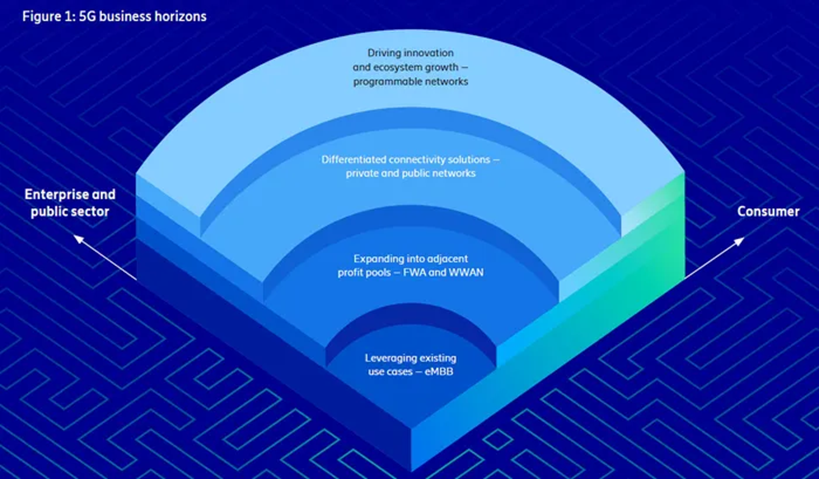Swedish kit vendor Ericsson held its traditional pre-MWC launch event in London, with an emphasis on what a slow burn 5G continues to be.
In many ways, the telecoms industry is still struggling to escape the expectations set by the 3G hype from 25 years ago. That seemed to establish a cadence of a new ‘G’ at the turn of each decade, which would catalyse a massive upgrade and capex cycle. 4G brought in true mobile broadband but now, in the middle of the 5G cycle, it remains difficult to say what the point of it is.
Ericsson, to its credit, has largely resisted the temptation to hype-up 5G, perhaps assisted by a natural Swedish tendency towards understatement. At its big pre-MWC event in central London, the assembled execs all seemed keen to stress how much more complicated, and thus protracted, the process of extracting returns on 5G investments is than from previous generations.
In his presentation Fredrik Jejdling, Head of Networks at Ericsson, conceded that 5G ROI remains an issue. He insisted, as had Ericsson CTO Erik Ekudden before him, that the key to unlocking the utility, and thus novel revenues, of 5G lies in differentiated, programmable networks. A big part of this is represented by Ericsson’s big bet on Vonage, which itself is testing the patience of its investors, but a lot also relies on the cloudification of the network and, yes, even Open RAN.
Head of marketing Cecilia Atterwall talked us through the most recent business focused edition of the Ericsson Mobility Report. The point of that report is to add some substance to the search for 5G ROI and the diagram below illustrates how it’s still all about finding new use-cases for eMBB (enhanced mobile broadband). Fixed wireless access has probably been the most substantial of them so far, with increased bandwidth now able to provide domestic broadband to premises that lack fixed connections. After that, it’s all about differentiated, programmable networks.

The other presenter was Per Narvinger, Ericsson’s Head of Cloud Software and Services. It was his job to make the pitch for the cloudification of networks, without which all this differentiation and programmability can’t happen. Of the eight press releases Ericsson bombarded us with on the day, the two that most directly concerned Narvinger’s area of concern were titled ‘Ericsson launches service orchestration and assurance to fuel CSP innovation’, and ‘Ericsson launches Explainable AI in Cognitive Software to accelerate AI adoption in network optimization’.
We were able to have one-to-one conversations with Narvinger and Jejdling immediately after the presentations, which gave us the opportunity to double-check our gut-feel that Ericson was essentially calling for continued patience with the evolution of 5G, but that the rewards for that patience will be unlimited.
5G is about an attempted paradigm shift for the mobile industry. As we alluded to at the start, the ‘Gs’ are an increasingly unhelpful concept. There have only really been two generations: voice and data, and now we’re attempting the next one. It’s still at such a preliminary stage that we don’t even know what to call it yet, but Ericsson’s point is that it’s all about making the network programmable.
Essentially this is a ‘build it and they will come’ play. It’s a massive gamble by Ericsson and the mobile industry on the whole that cloudifying the network in order to let third parties innovate on top of it, in ways that have yet to manifest themselves, will pay off. Both Narvinger and Jejdling stressed that this should enable CSPs to retain a bigger piece of the action than they did with 4G, from which the major beneficiaries were internet companies like Google and Uber.
But many questions remain unanswered, perhaps most critically how operators will charge these third parties for that access, however the mobile industry has no alternative than to go all-in on this gamble. Voice revenues have disappeared and end-users refuse pay more for their exponentially rising data use. If the industry doesn’t reinvent itself, it will die.
“The best way to predict the future is to invent it,” Jejdling told us as the end of our conversation. That is why Ericsson has made big bets like its acquisition of Vonage, which it’s easy to conclude have been bad moves so far. But the core message from today was that the programmable network is inevitable and the best hope for the industry. When that vision will come to fruition, and even what form it will take, remains unclear, but what choice is there other than to stay the course and hope for the best?
El artículo original puede consultarse en:
